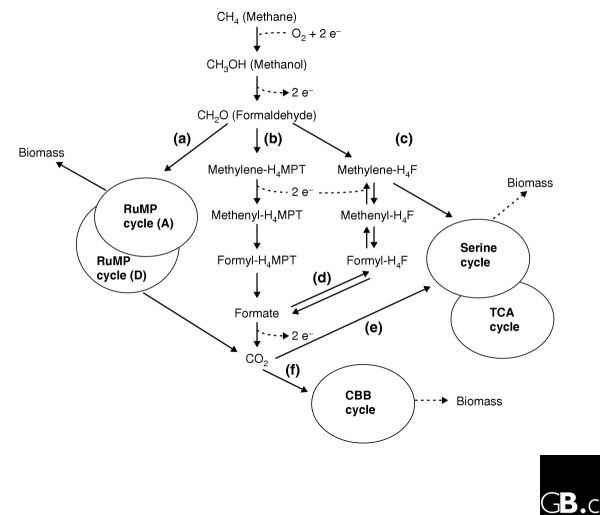Figure 2.

Pathways in the aerobic methanotrophic bacterium Methylococcus capsulatus involved in the metabolism of single-carbon compounds, as determined by genome sequencing and proteome analysis. Formaldehyde produced from methane can be metabolized in the following alternative ways: (a) through the ribulose monophosphate (RuMP) cycle, which can either generate biomass (via the assimilatory (A) RuMP cycle) or CO2 (via the dissimilatory (D) RuMP cycle); (b) by conversion to formate via intermediates containing tetrahydromethanopterin (H4MPT); (c) via methylene-tetrahydrofolate (methylene-H4F) to the serine cycle and from there into biomass. Under certain conditions, there can be an excess of formaldehyde and formate; the former can be used up through pathway (c) and the latter by reduction to methylene-H4F (d) and thus directed into the serine cycle. CO2 produced in any of these reactions can be converted to biomass by either (e) the serine cycle or (f) the Calvin-Benson-Bassham (CBB) cycle.
